«If a picture is worth a thousand words, a comparison is worth at least two thousand.
The exhibition Artists and Amateurs, Etching in Eighteenth-Century France (on view through January 5) offers many thought-provoking pairings illuminating aspects of artistic process and individual style. An etching, which is printed from ink held in sunken lines on a copper plate, can be reworked between printings, resulting in distinct states. Such is the case with a print depicting soldiers trudging through a bleak landscape, off to join their regiment. An extremely rare first state is etched by the hand of Antoine Watteau, renowned painter of fêtes galantes. His delicate sinuous line imbues his figures with a grace more balletic than warlike.»

Antoine Watteau (French, Valenciennes 1684–1721 Nogent-sur-Marne). Recruits Going to Join the Regiment, ca. 1715–16. Etching and drypoint, first state of three. The Metropolitan Museum of Art, New York, Purchase, Gift of Dr. Mortimer Sackler, Theresa Sackler and Family, and The Elisha Whittelsey Collection, The Elisha Whittelsey Fund, 2006 (2006.43)
In a later state of the same print, the professional printmaker Henri Simon Thomassin has worked over the plate in engraving, using a burin to cut deep parallel lines to model and shadow the forms. Although the contrast has been heightened and the legibility improved, Watteau's spirited line has been largely obscured by the engraving. Below the image, lettering has been added, providing a title and some related verses, information on the designer and the printmaker, as well as an address where the print was sold.
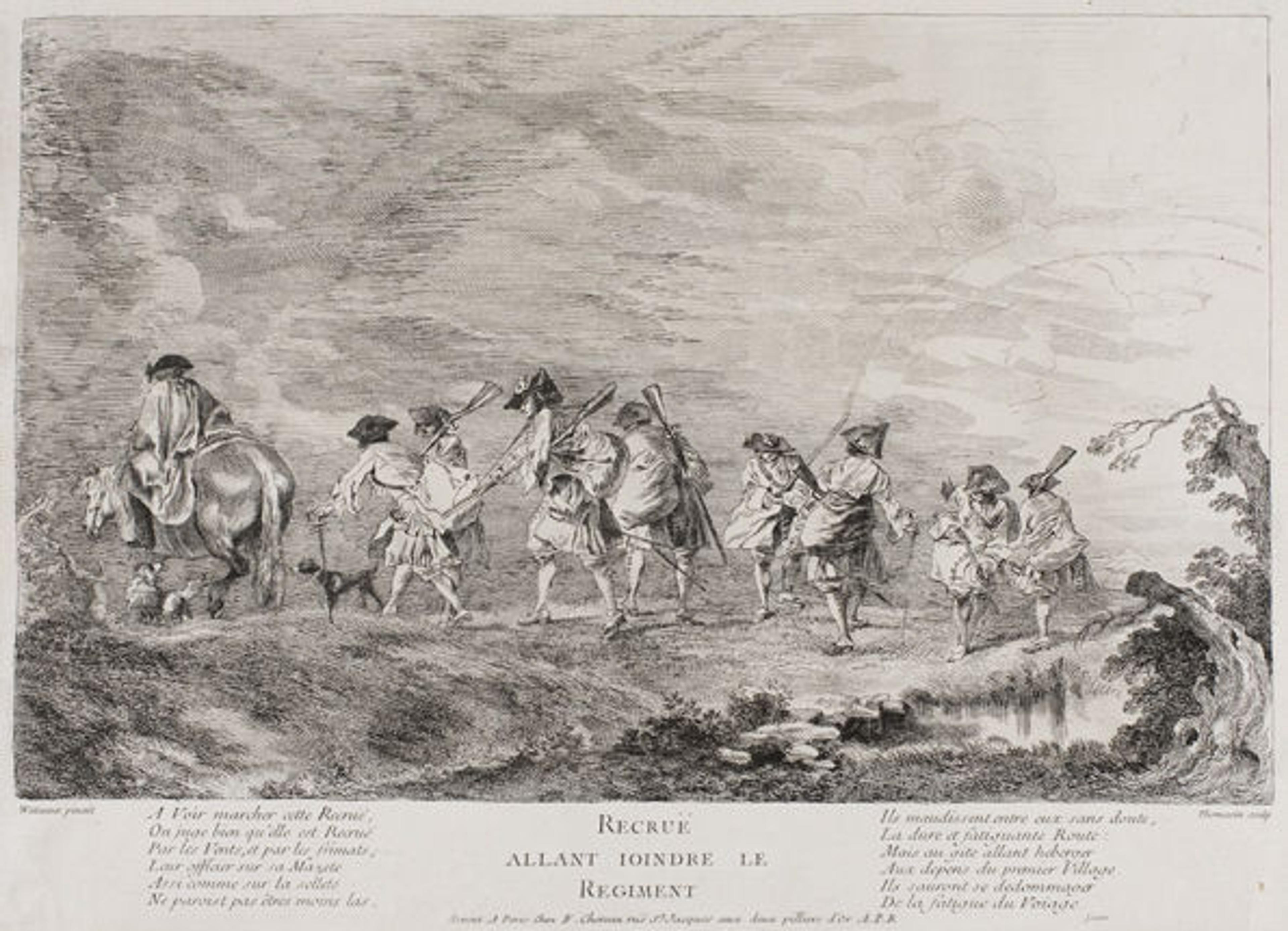
Antoine Watteau (French, Valenciennes 1684–1721 Nogent-sur-Marne) and Henri Simon Thomassin (French, Paris 1687–1741 Paris). Recruits Going to Join the Regiment, ca. 1717–26. Etching, drypoint, and engraving, third state of three. The Art Institute of Chicago, The Amanda S. Johnson and Marion J. Livingston Endowment Fund (2007.503)

In cases where two artists made etchings inspired by the same drawing, the distinctiveness of their individual styles can be readily seen. Here, Jean Honoré Fragonard, after having not etched in about fifteen years, returned to the medium to instruct his seventeen-year-old sister-in-law, Marguerite Gérard, an aspiring painter.

Left: Jean Honoré Fragonard (French, Grasse 1732–1806 Paris). Monsieur Fanfan, 1778. Etching, third state of three. Collection of David P. Tunick; Right: Marguerite Gérard (French, Grasse 1761–1837 Paris) after Jean Honoré Fragonard (French, Grasse 1732–1806 Paris). Monsieur Fanfan, 1778. Etching. Philadelphia Museum of Art, Gift of Mr. and Mrs. Laurence Eyre, 1958 (1958-9374)
Fragonard used the etching needle to essentially re-draw the image, varying his line to suggest a range of tactile qualities. Serpentine lines describe the boy's golden locks while careful stippling (dots) model his pudgy face. Gérard, on the other hand, arranged her marks to closely imitate the chalk and wash lines that made up Fragonard's drawing.
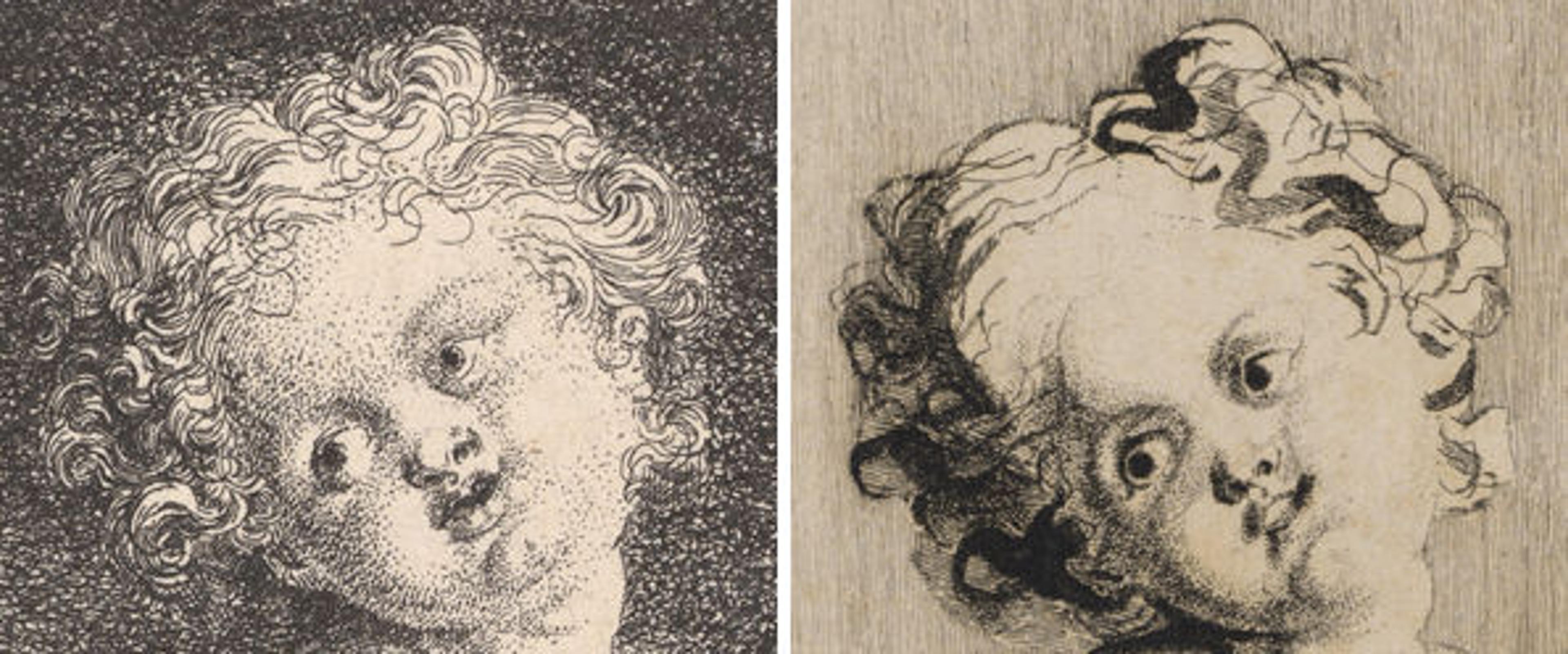
Etchings did not always imitate the visual characteristics of the drawings on which they were based. For his Arrival at the Wine Vat, Joseph Marie Vien first drew the scene with pen and brown ink, then used brush and brown wash to lightly model the forms, leaving the emphasis on the flat planarity of the composition.
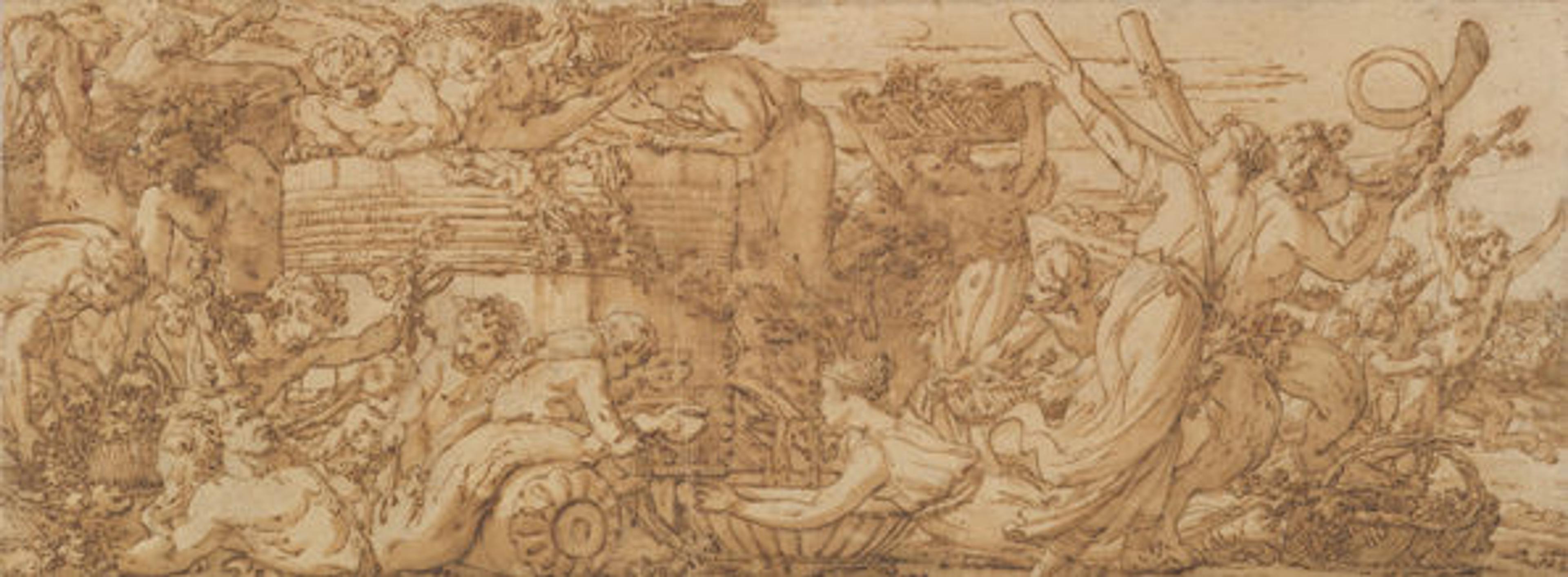
Joseph Marie Vien (French, Montpellier 1716–1809 Paris). Arrival at the Wine Vat, ca. 1755. Pen and brown ink, brush and brown wash, incised, verso covered in red chalk. The Metropolitan Museum of Art, Purchase, Alain and Marie-Christine van den Broek d'Obrenan Gift, 2008 (2008.599)
After transferring the contours of the forms to a copper plate covered in ground, he then drew the design onto the plate with an etching needle. Instead of the areas of tone produced by wash in the drawing, he drew closely spaced, nearly parallel lines to create shadow and texture. Their undulating hand-drawn quality animates the plate while retaining its essential planarity, a feature which, for Vien, evoked the art of antiquity.
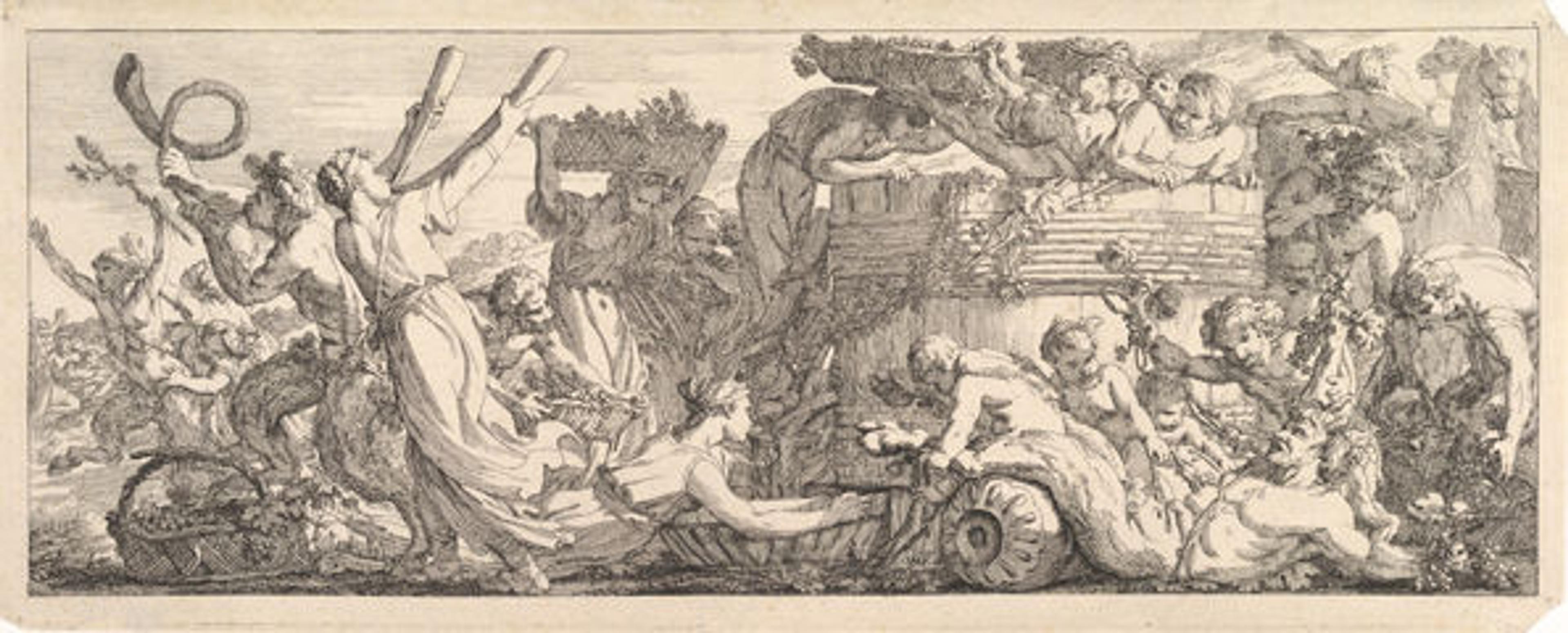
Joseph Marie Vien (French, Montpellier 1716–1809 Paris). Arrival at the Wine Vat, ca. 1755. Etching. The Metropolitan Museum of Art, The Elisha Whittelsey Collection, The Elisha Whittelsey Fund, 2011 (2011.540)

Finally, two works recently acquired by the Museum shed light on the friendships and close working relationships that developed between young artists and the collectors who were also amateur printmakers. The most influential amateur was Claude Henri Watelet, a scholar, collector, and connoisseur of prints who enjoyed making prints himself. He made his second trip to Rome in 1764 accompanied by his mistress, Marguerite Le Comte, whom he had instructed in the technique of etching. Étienne de Lavallée-Poussin, a student of painting at the French Academy in Rome, drew her portrait seated at a table. Watelet then used the drawing as a model for his etched portrait of Le Comte, adopting the oval format and creating layers of cross-hatching to set her in an ambiguous, shadowy interior. Worth noting are the elements Watelet added to Lavallée-Poussin's composition: various etching tools on the table and in her hand, and a portrait print bearing her signature unfurling over the table edge. With these details, he transformed a generic portrait into a portrait of his mistress as a printmaker, celebrating a specific portrait print she had just completed.
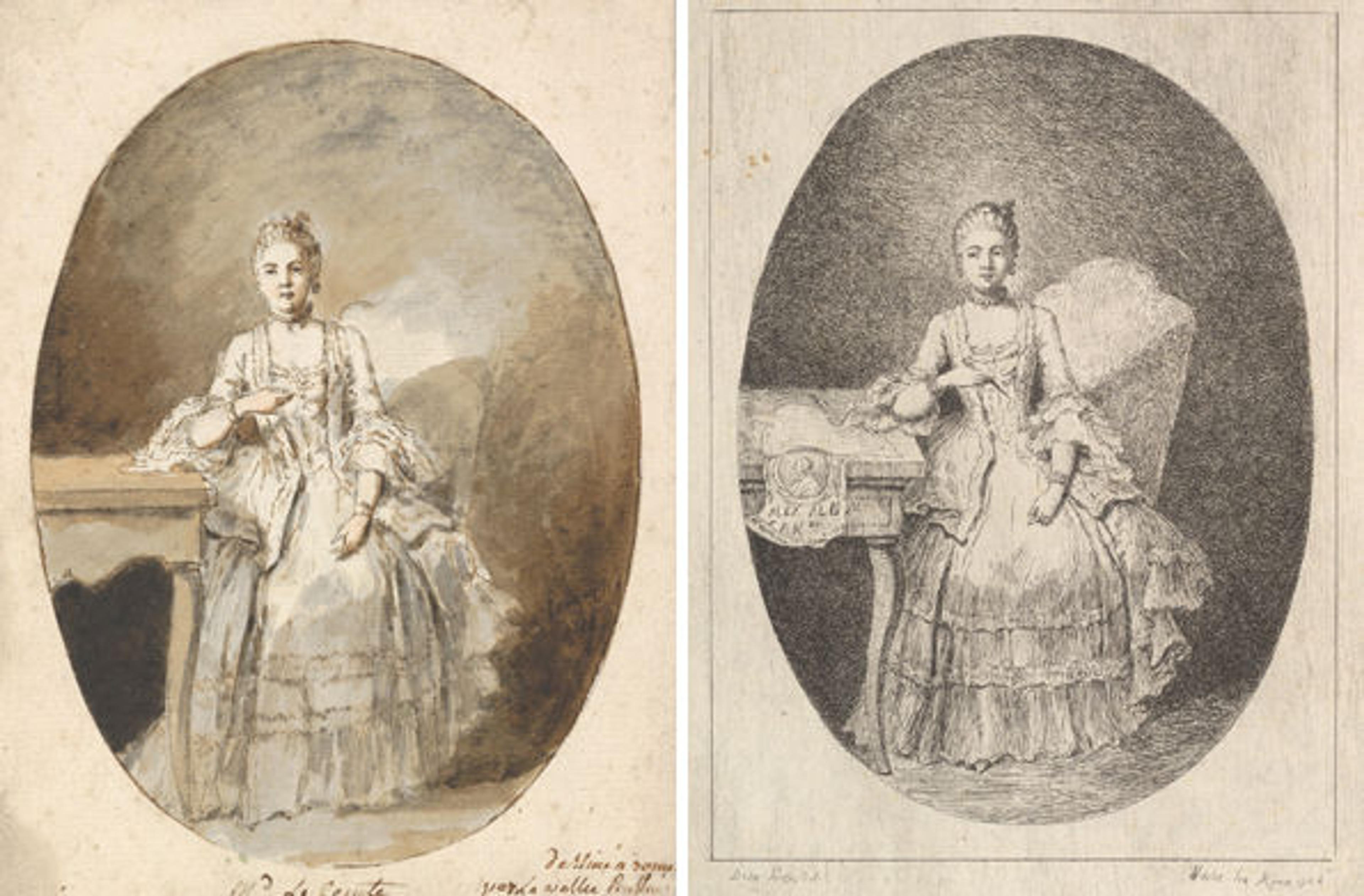
Left: Étienne de Lavallée-Poussin (French, Rouen 1733–1793 Paris). Marguerite Le Comte, 1764. Black chalk, pen and brown ink, brush and brown and gray wash. The Metropolitan Museum of Art, Purchase, PECO Foundation Gift, 2013 (2013.181); Right: Claude Henri Watelet (French, Paris 1718–1786 Paris), after Étienne de Lavallée-Poussin (French, Rouen 1733–1793 Paris). Marguerite Le Comte, 1764. Etching, second state of three. The Metropolitan Museum of Art, A. Hyatt Mayor Purchase Fund, Marjorie Phelps Starr Bequest, 2012 (2012.384)
The process of making an etching necessarily involves transformation. A work in one medium or by one artist undergoes a process of translation, both tactile and visual, as the ideas become lines cut into metal, filled with ink, and printed on a new surface. Close comparisons of pairs, of versions, of states, and of sources bring out the creativity of each step of the process. Often, the relationship is not one of genius and imitator, but of dialogue and innovation.
Artists and Amateurs is on view through January 5 in the Galleries for Drawings and Prints. I invite you to compare these pairs for yourself.